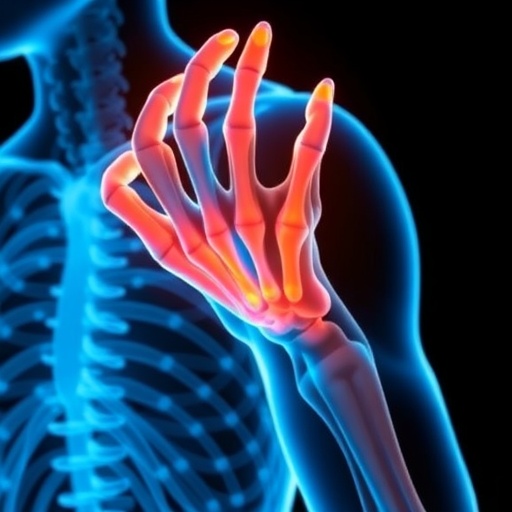.adsslot_GV20jlah4e{ width:728px !important; height:90px !important; }
@media (max-width:1199px) { .adsslot_GV20jlah4e{ width:468px !important; height:60px !important; } }
@media (max-width:767px) { .adsslot_GV20jlah4e{ width:320px !important; height:50px !important; } }
ADVERTISEMENT
One of the most remarkable revelations of the study was the identification of unique gene expression patterns that correlate strongly with efficacy profiles of specific biologic agents, such as TNF inhibitors, IL-6 receptor antagonists, and Janus kinase (JAK) inhibitors. By integrating multi-layered molecular data, the team constructed predictive algorithms capable of stratifying patients based on their likelihood to respond favorably to given treatments. This ability to prospectively match patients with the most suitable biologic markedly advances the personalized medicine agenda in rheumatology.
Beyond identifying predictive markers, the study sheds light on the underlying mechanisms driving treatment resistance. The molecular profiling exposed pathways related to immune cell exhaustion, interferon signaling, and stromal remodeling that may impede therapeutic efficacy. Understanding these resistance mechanisms not only guides treatment selection but also opens avenues for novel drug development aimed at overcoming refractory disease states.
The integration of proteomic data further enriched the molecular portrait, validating gene expression findings at the protein level and revealing post-translational modifications influential in cell signaling and drug response. This comprehensive multi-omics framework ensured robustness and reproducibility of the predictive signatures, enhancing their translational potential.
Beyond its immediate applications, the methodology pioneered by Lewis and colleagues sets a precedent for other immune-mediated inflammatory diseases where tissue heterogeneity and variable drug responsiveness pose therapeutic challenges. Conditions such as psoriatic arthritis, lupus, and inflammatory bowel disease might similarly benefit from deep molecular profiling to refine treatment strategies.
This study exemplifies the power of collaborative, multidisciplinary science integrating rheumatology, molecular biology, computational analysis, and clinical trial expertise. It spotlights how leveraging cutting-edge technologies can unravel the intricacies of immune-mediated diseases and heralds a new era of personalized therapeutics designed around individual patient biology.
Subject of Research: Predictive molecular signatures in synovial tissue for response to biologic therapies in rheumatoid arthritis.
Article Title: Deep molecular profiling of synovial biopsies in the STRAP trial identifies signatures predictive of treatment response to biologic therapies in rheumatoid arthritis.
Article References:
Lewis, M.J., Çubuk, C., Surace, A.E.A. et al. Deep molecular profiling of synovial biopsies in the STRAP trial identifies signatures predictive of treatment response to biologic therapies in rheumatoid arthritis. Nat Commun 16, 5374 (2025). https://doi.org/10.1038/s41467-025-60987-9
Image Credits: AI Generated
Tags: biologic therapies for rheumatoid arthritishigh-throughput omics methodologiesmolecular signatures in autoimmune disordersovercoming treatment heterogeneity in RApersonalized medicine for rheumatoid arthritisprecision medicine in rheumatoid arthritispredictive biomarkers for RA treatmentrheumatoid arthritis treatment responseSTRAP trial findingssynovial biopsies for RAsynovial tissue molecular profilingtranscriptomics and proteomics in RA





